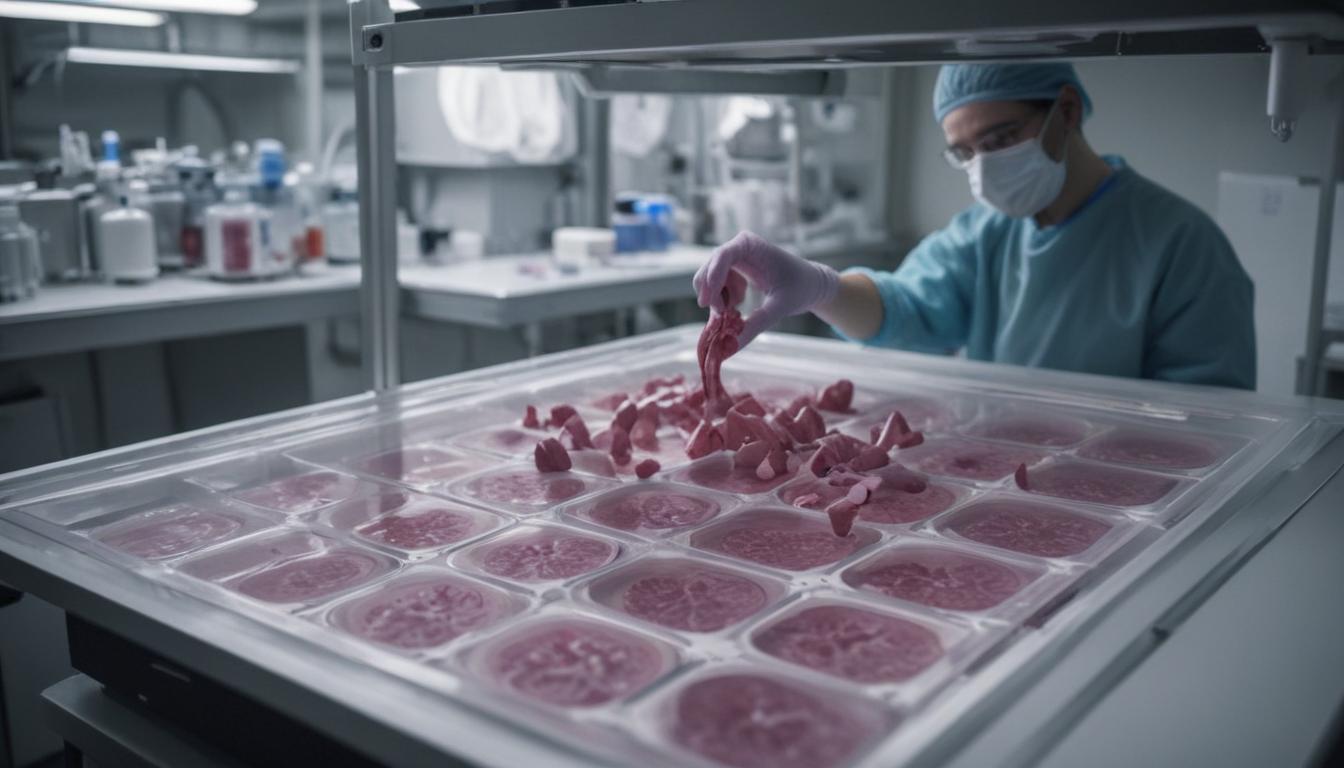Now Reading: Bio-printing Organs on Demand
- 01
Bio-printing Organs on Demand
Bio-printing Organs on Demand

Bio-printing Creating Organs and Tissues
The wait can feel endless. For hundreds of thousands of people around the world, life is a constant state of uncertainty, spent on a waiting list for a life-saving organ transplant. The days are filled with hope and fear, as their health hangs in the balance, dependent on the tragedy of another to receive the gift of life. Even for those fortunate enough to receive a transplant, the journey isn’t over. It’s followed by a lifetime of immunosuppressant drugs and the persistent risk of their body rejecting the new organ. This critical shortage of donor organs and the complications of transplantation represent one of modern medicine’s most significant challenges.
But what if we could bypass the waiting list entirely? Imagine a future where a new organ—a kidney, a liver, even a heart—could be created on demand, using a patient’s own cells. This isn’t the plot of a science fiction movie; it’s the promise of a revolutionary technology called bio-printing. This groundbreaking field is poised to transform medicine by building living, functional tissues and organs layer by layer, offering a personalized solution that could one day make organ shortages and rejection a thing of the past.
What Exactly is Bio-printing
At its core, bio-printing is an advanced form of 3D printing. While a standard 3D printer uses materials like plastic or metal to build objects, a bio-printer uses a special substance called “bio-ink” to construct living biological structures. This bio-ink is the key to the entire process. It’s a complex mixture containing living cells, often a patient’s own stem cells, suspended in a nutrient-rich hydrogel. This gel acts as a supportive scaffold, providing the cells with the structure, moisture, and nutrients they need to survive and thrive during and after the printing process.
The creation of a bio-printed tissue begins with a detailed blueprint, typically generated from a patient’s CT or MRI scan to ensure a perfect anatomical fit. The specialized bio-printer then meticulously deposits the bio-ink layer by layer, following the digital model with incredible precision. Once printed, the fragile cellular structure is moved to a bioreactor, a sophisticated incubator that mimics the conditions inside the human body. Here, the cells are encouraged to mature, multiply, and self-organize into functional, living tissue, complete with the intricate internal architecture required to perform its specific biological function.

The Groundbreaking Applications of Bio-printing
The potential applications of bio-printing are vast and could fundamentally reshape healthcare as we know it. Beyond the ultimate goal of printing entire organs, this technology is already making significant strides in other critical areas of medicine, from research and drug development to personalized tissue repair.
Solving the Organ Shortage Crisis
The most profound impact of bio-printing lies in its potential to manufacture complex, transplantable organs on demand. By using a patient’s own cells to create the bio-ink, the resulting organ would be a perfect genetic match. This eliminates the risk of immune rejection, removing the need for a lifetime of powerful and often debilitating immunosuppressant drugs. Patients would no longer need to endure the agonizing wait for a suitable donor. Instead, a failing organ could be replaced with a brand-new, fully functional one grown specifically for them, heralding a new era of personalized, regenerative medicine.
Revolutionizing Drug Testing and Research
Currently, developing new pharmaceuticals is a long, expensive process that heavily relies on animal testing, which often fails to predict human responses accurately. Bio-printing offers a more ethical and effective alternative. Scientists can print small-scale, functional human tissues—like liver, heart, or lung tissue—to test the safety and efficacy of new drugs in a controlled lab environment. This allows for faster, more accurate data on how a drug will affect human cells, accelerating the development of new treatments and reducing our reliance on animal models. It also opens the door to studying diseases in ways never before possible, by creating diseased tissue models to better understand their progression and identify potential cures.
The Challenges on the Road to a Bio-printed Future
While the promise of bio-printing is immense, the path to creating fully functional, complex organs for transplantation is filled with significant scientific and technical hurdles. Scientists and engineers are working tirelessly to overcome these obstacles, but widespread clinical application is still on the horizon. A primary challenge is vascularization—the process of creating a network of blood vessels within the printed tissue. Larger organs require an intricate web of arteries, veins, and capillaries to supply oxygen and nutrients and remove waste. Without a functional vascular system, the cells in the core of the organ would quickly die. Researchers are experimenting with various techniques, including printing vessel networks directly or using sacrificial gels that create channels for blood vessels to grow into.
Beyond the biological complexities, there are logistical and regulatory challenges to address. Bio-printing is currently an incredibly expensive technology, requiring specialized equipment and highly skilled personnel. Bringing these costs down will be essential for making the treatments accessible to the general public. Furthermore, regulatory bodies like the FDA will need to establish rigorous guidelines and approval processes to ensure the safety and efficacy of any bio-printed organs and tissues before they can be used in humans. Navigating these ethical and regulatory landscapes is just as crucial as solving the scientific puzzles. Despite these challenges, the progress in the field is accelerating, bringing us closer every day to a future where we can simply print the cure.


































